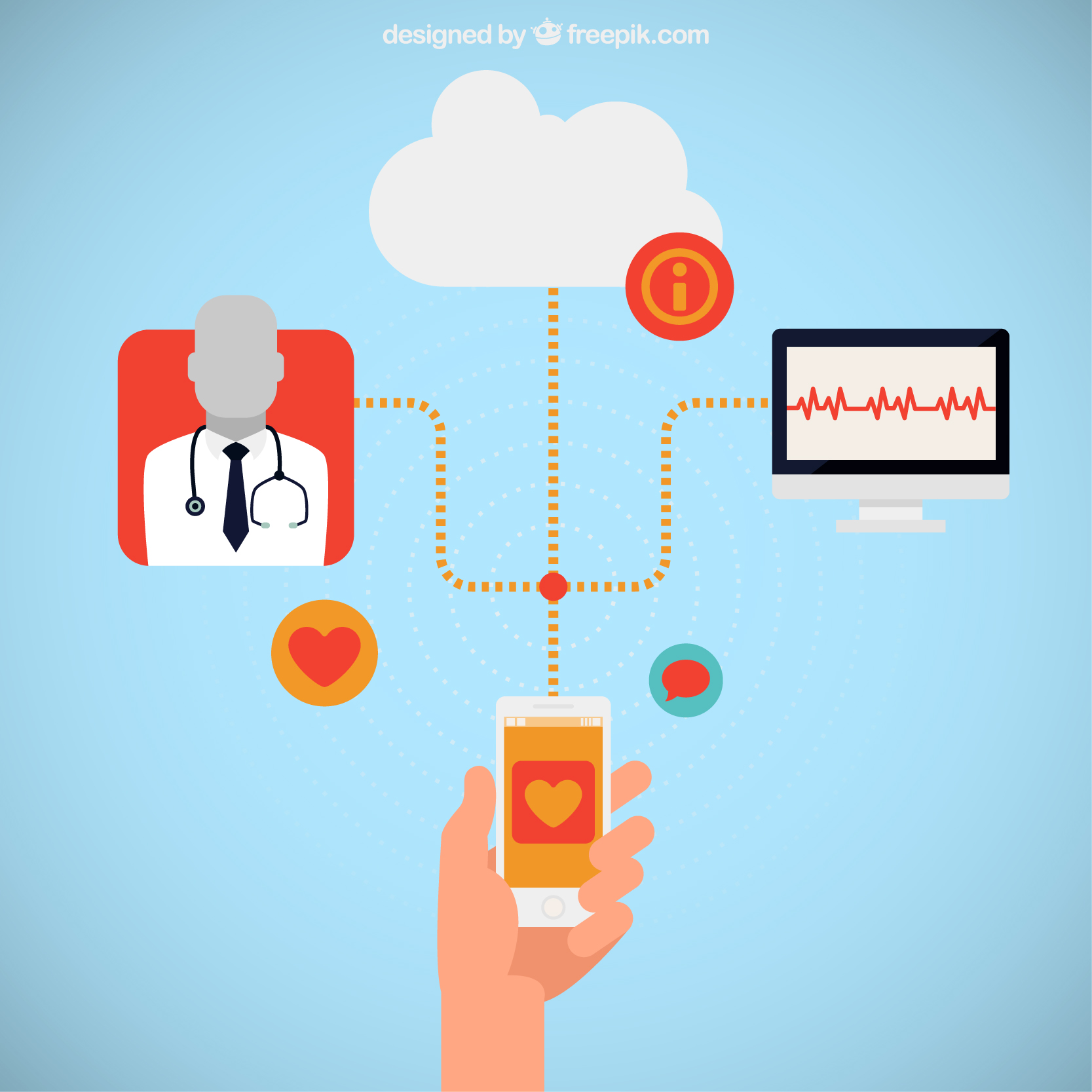Can Technology Really Reduce Healthcare Costs? The Data Says Yes!

Strong 8k brings an ultra-HD IPTV experience to your living room and your pocket.
The rising costs of healthcare have long been a concern for patients, providers, and policymakers alike. In the U.S. alone, healthcare expenditures reached an estimated $4.3 trillion in 2021, accounting for nearly 20% of the nation's GDP. As the demand for quality care continues to grow, healthcare systems are under pressure to find ways to reduce costs without compromising patient outcomes.
Enter technology. From telemedicine to artificial intelligence, healthcare innovations are promising not only to improve patient care but also to reduce the financial burden on providers and patients. But the real question remains: Can technology really reduce healthcare costs? The data says yes. Let’s explore how various technologies are transforming healthcare, leading to significant cost savings.
1. Telemedicine: Cutting Costs While Expanding Access
Telemedicine is one of the most impactful technologies in healthcare, especially after the COVID-19 pandemic. By enabling virtual consultations, telemedicine reduces the need for in-person visits, cutting travel, wait times, and administrative overhead for both providers and patients.
Key Cost Savings from Telemedicine:
Fewer hospital admissions: A 2020 study found that telemedicine reduces hospital admissions by up to 38% for patients with chronic conditions, such as diabetes and heart disease. This is due to better remote monitoring and early interventions, which prevent costly emergency room visits.
Lower operational costs: By reducing the need for physical office space and staff, telemedicine lowers overhead costs for healthcare providers. According to a study by Health Affairs, hospitals that integrate telemedicine into their services can save up to $1,500 per patient annually.
Expanded access to care: Telemedicine increases healthcare access for rural and underserved populations, reducing the need for expensive urgent care visits and delayed treatments. This leads to better health outcomes and, ultimately, lower costs.
2. Artificial Intelligence: Enhancing Efficiency and Precision
Artificial intelligence (AI) is revolutionizing the way healthcare providers diagnose and treat patients. AI-powered systems can analyze vast amounts of medical data, identify patterns, and provide insights that improve decision-making. As a result, AI is reducing misdiagnoses, unnecessary tests, and treatment inefficiencies—all of which contribute to lowering healthcare costs.
Key AI-Driven Cost Savings:
Automating administrative tasks: According to a McKinsey report, AI could save the U.S. healthcare industry $360 billion annually by automating repetitive tasks such as scheduling, billing, and claims processing.
Optimizing treatment plans: AI systems are being used to create personalized treatment plans that reduce trial-and-error approaches in medicine. This improves outcomes and reduces the cost of ineffective treatments.
AI-powered diagnostics: AI algorithms can detect diseases such as cancer and heart disease earlier and more accurately than traditional methods. Early diagnosis means less invasive and less costly treatments, leading to significant long-term savings.
3. Electronic Health Records (EHRs): Streamlining Patient Data
The transition from paper-based records to electronic health records (EHRs) has transformed how patient information is stored and shared. EHRs improve coordination among healthcare providers, reduce errors, and eliminate redundant testing—key drivers of rising healthcare costs.
Cost Savings Through EHRs:
Reducing duplicative testing: EHRs provide real-time access to patient information, ensuring that tests and procedures aren’t repeated unnecessarily. A study by the American Medical Association found that EHRs reduce duplicate imaging tests by 44%, saving both time and money.
Fewer medical errors: EHRs provide doctors with complete patient histories, reducing the likelihood of medication errors and adverse reactions. This translates to fewer malpractice claims and lower liability insurance costs.
Improved efficiency: EHRs streamline administrative workflows by automating billing, coding, and appointment scheduling. According to a HealthIT.gov report, healthcare providers that fully implement EHRs can save up to $14,000 per year on administrative tasks.
4. Wearable Technology: Preventive Care and Real-Time Monitoring
Wearable devices like smartwatches and fitness trackers have become integral tools in modern healthcare. These devices monitor vital signs, activity levels, and other health metrics, providing real-time data that helps patients and providers stay ahead of potential health issues.
How Wearables Save Costs:
Preventing chronic disease complications: Wearable devices help patients manage chronic conditions such as diabetes and hypertension. By tracking blood glucose levels or blood pressure in real-time, these devices reduce the need for expensive hospitalizations and emergency interventions.
Early detection of health issues: Some wearables are equipped with AI-driven algorithms that detect irregular heart rhythms or respiratory problems before they escalate. Catching these issues early reduces the need for costly medical procedures.
Encouraging healthy behaviors: Wearables incentivize users to stay active and adhere to their care plans, leading to better overall health and reduced healthcare costs. A Deloitte report found that wearables contribute to a 20% reduction in hospital readmissions for chronic disease patients.
5. Blockchain: Securing Data and Reducing Fraud
Blockchain technology, best known for its role in cryptocurrencies, is gaining traction in healthcare. By securely encrypting data and ensuring transparent transactions, blockchain can reduce administrative costs and combat fraud—two major sources of healthcare overspending.
Blockchain’s Cost-Cutting Potential:
Streamlining billing and claims: Blockchain can automate and verify insurance claims, reducing the administrative burden on healthcare providers and minimizing errors. According to a report by BIS Research, blockchain could save the healthcare industry $100-$150 billion annually by 2025 through improved billing accuracy and fraud prevention.
Reducing fraud: The National Health Care Anti-Fraud Association estimates that healthcare fraud costs the U.S. $68 billion annually. Blockchain’s transparent and secure ledger system can help detect and prevent fraudulent billing practices, saving billions.
Ensuring data security: Data breaches cost the healthcare industry an average of $9.23 million per incident, according to IBM. Blockchain’s decentralized security system reduces the risk of breaches, lowering the financial impact of data theft.
6. Cloud Computing: Lowering Infrastructure Costs
Cloud computing allows healthcare organizations to store data remotely, reducing the need for costly physical infrastructure and IT maintenance. Cloud-based systems also improve data access and collaboration, leading to more efficient care delivery.
Cloud-Based Savings:
Reduced IT costs: Moving to the cloud eliminates the need for expensive on-site servers and IT support. A study by Black Book Market Research found that healthcare organizations that adopted cloud solutions saw a 20% reduction in IT infrastructure costs.
Improved scalability: Cloud computing allows healthcare providers to scale their operations without significant upfront investments. This flexibility is particularly important for smaller practices looking to expand without incurring massive costs.
Better collaboration: Cloud-based systems enable seamless sharing of patient data between healthcare providers, reducing delays in care and improving patient outcomes. Faster treatment times mean lower overall healthcare costs.
Conclusion
The data is clear: technology has the potential to significantly reduce healthcare costs while improving patient care. Whether through telemedicine, AI, wearables, blockchain, or cloud computing, healthcare organizations that embrace digital solutions can streamline operations, prevent costly errors, and deliver more efficient care. The future of healthcare lies in leveraging technology to not only enhance patient outcomes but also to make healthcare more affordable and accessible for everyone.
The challenge now is for healthcare providers and policymakers to adopt and implement these technologies at scale, ensuring that the full cost-saving potential of healthcare innovation is realized. The question isn’t whether technology can reduce healthcare costs—the data says yes—it’s how quickly we can make it happen.
Get in touch for Healthcare Software Development.
Note: IndiBlogHub features both user-submitted and editorial content. We do not verify third-party contributions. Read our Disclaimer and Privacy Policyfor details.





